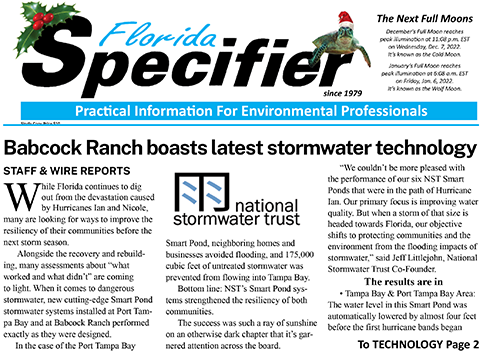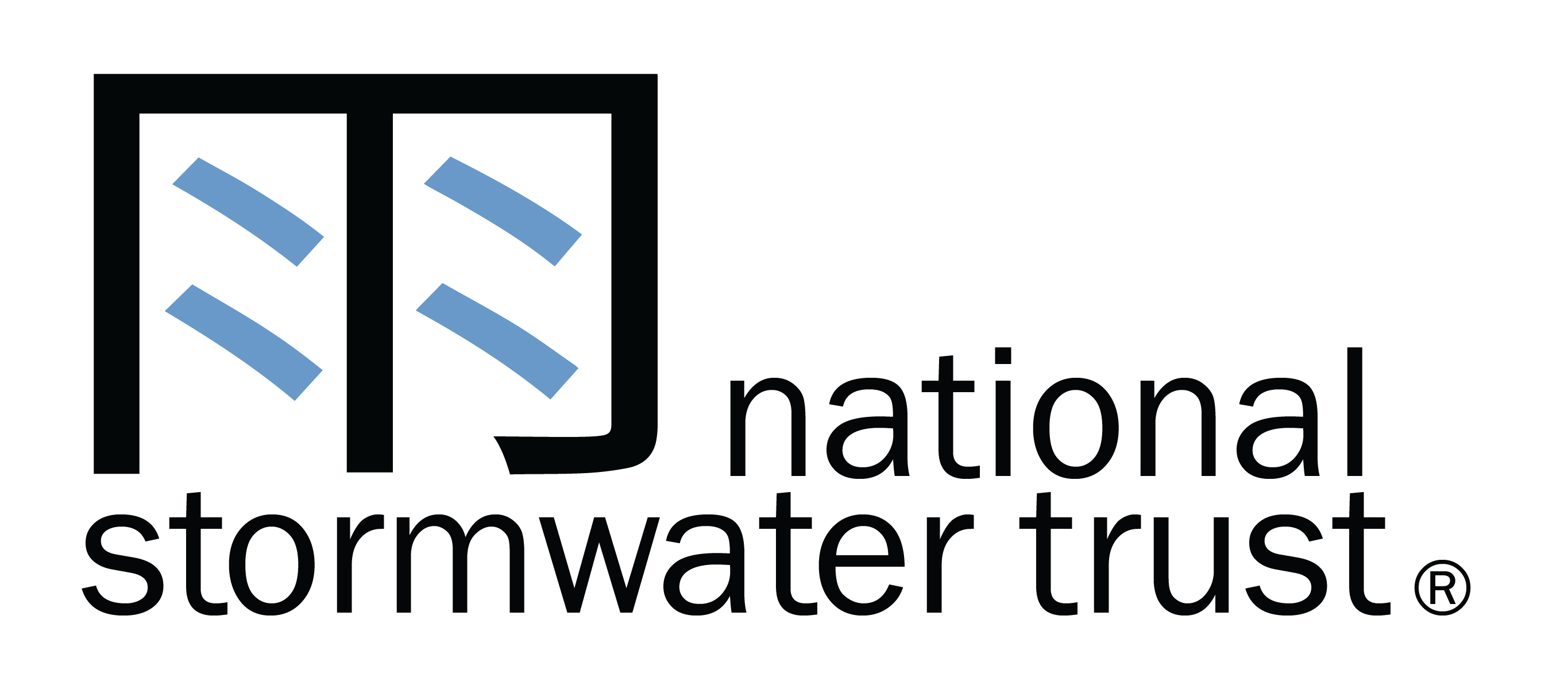
While Florida continues to dig out from the devastation caused by Hurricanes Ian and Nicole, many are looking for ways to improve the resiliency of their communities before the next storm season.
Alongside the recovery and rebuilding, many assessments about “what worked and what didn’t” are coming to light. When it comes to dangerous stormwater, new cutting-edge Smart Pond stormwater systems installed at Port Tampa Bay and at Babcock Ranch performed exactly as they were designed.
In the case of the Port Tampa Bay Smart Pond, neighboring homes and businesses avoided flooding, and 175,000 cubic feet of untreated stormwater was prevented from flowing into Tampa Bay.
Bottom line: NST’s Smart Pond systems strengthened the resiliency of both communities.
The success was such a ray of sunshine on an otherwise dark chapter that it’s garnered attention across the board.
“We couldn’t be more pleased with the performance of our six NST Smart Ponds that were in the path of Hurricane Ian. Our primary focus is improving water quality. But when a storm of that size is headed towards Florida, our objective shifts to protecting communities and the environment from the flooding impacts of stormwater,” said Jeff Littlejohn, National Stormwater Trust Co-Founder.
The Results Are In
• Tampa Bay & Port Tampa Bay Area: The water level in this Smart Pond was automatically lowered by almost four feet before the first hurricane bands began to impact the region. That extra storage enabled the Smart Pond to capture more than 175,000 cubic feet of untreated stormwater, preventing its discharge into the neighboring community and nearby Tampa Bay.
• Babcock Ranch: NST Smart Ponds in this Southwest Florida residential community near the Caloosahatchee River used live rainfall forecasts to project the impact of the storm before its arrival. This
real-time flood forecasting capability gave the community’s leaders assurance that its large lakes had adequate storage to contain the stormwater and protect the homes, roadways, and schools.
“This confirms for the me the value of smart stormwater technology,” said Syd Kitson, Chairman and CEO, Kitson & Partners. “As our community grows, we look forward to continued collaboration with NST to incorporate their Smart Pond technology.”
Babcock Ranch is the brainchild of Kitson, a 64-year-old former professional football player who made his name in the 1980s with the Green Bay Packers. He went on to found a real estate development company, Kitson & Partners, and Babcock Ranch is one of firm’s showcase projects.
Jennifer Languell is a sustainability engineer who helped design Babcock Ranch, and resident. “We felt you could develop and improve land, not just develop in a traditional way where people think you are destroying the land. We have a lot of open spaces. We have a lot of trails. We have
a lot of parks,” she says. “The things that we do, you don’t see. The strength of the buildings, or the infrastructure that deals with stormwater, or the utilities. You don’t see that stuff,” she says. “Which is good, because most people don’t need or want to think about it.”
How Smart Ponds Work
Most Floridians are familiar with traditional stormwater ponds. They are all around us in residential communities and commercial developments alike. Traditional ponds hold rain and stormwater runoff, however, in large storms, these ponds often overflow and flood the surrounding area with untreated stormwater.
The latest innovation in stormwater management is to connect a pond to live weather forecast data and use that information to project water levels and, if necessary, automatically lower its water level before a storm arrives.
